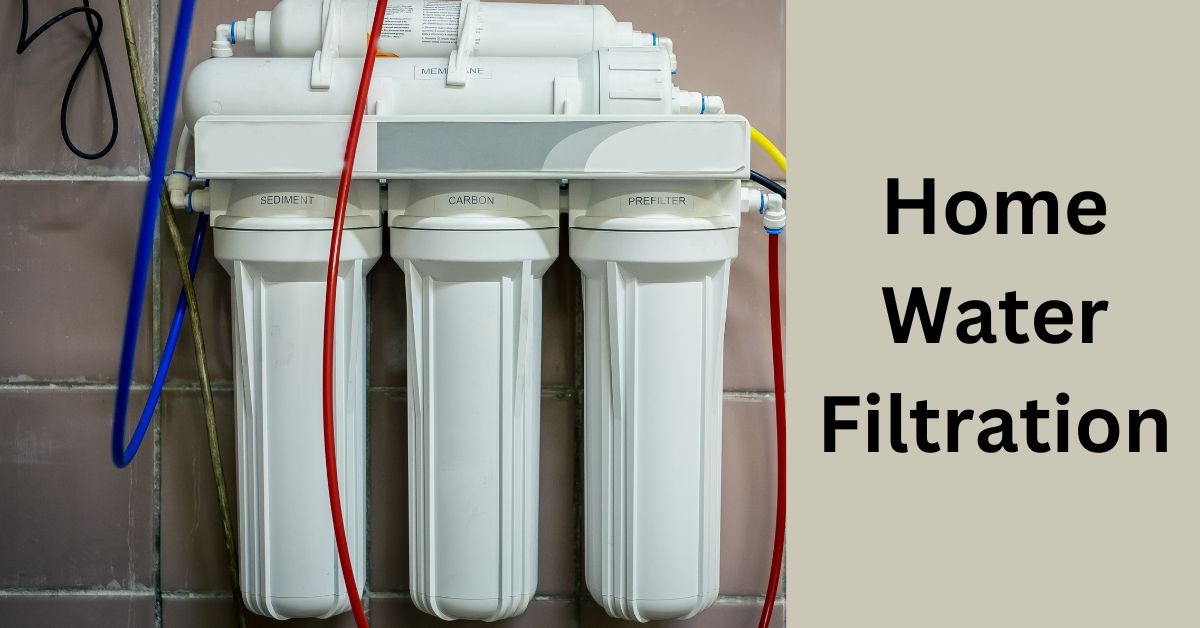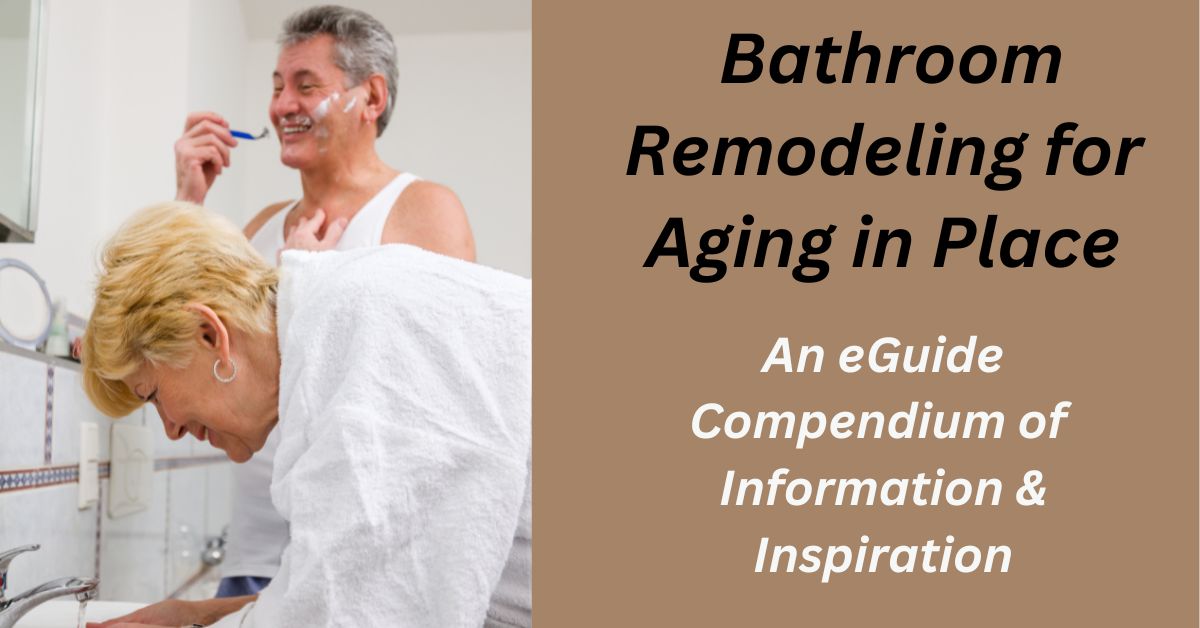Table of Contents
Note: If you came to this post about home water filtration through a random search, please click on this parent page and our home page for more context.
Water Filtration Systems
Considering a water filtration system for the home, perhaps as part of a home improvement project, needs some perspective. Most of us are health conscious but are blissfully unaware that our home environment may be sabotaging us. This includes the water in our home.
The Big Water Filtration Picture
While we must pay attention to the water we use for drinking, bathing, and cooking. We also have to consider what is practical and affordable among the water filtration options available to us.
After all, if we are renting an apartment, installing a whole-house water filtration system is just not on the table.
Water Filtration Options
There are a variety of water filtration systems available for the home. These range from whole house systems at one end of the spectrum to simple carbon filters in our refrigerator or incorporated in a water pitcher.
Filtration mechanisms include activated carbon filters and reverse osmosis.
Water Softeners – Misconceptions
It is a common misconception that an ion exchange water softener is a water filter. It is not. It simply removes the elements of calcium and magnesium that cause hard water and replaces them with sodium or potassium.
Hard water is only a threat to the plumbing in your home and the efficiency of the soap you use. It causes a build-up of scale in your plumbing. It also causes scum in your clothes and on bath, sink, and shower surfaces.
But hard water is not a threat to your health. In fact, the minerals removed from the water by a water softener are actually good for you.
Here is a good reference on water softeners. So think twice about the cost/benefits of a water softener. We’ll discuss that a bit more later.
Is a Water Filtration System Necessary?
The municipal water supply delivers water to the plumbing system in our homes. And we use it for drinking, bathing, cooking, flushing, washing, and irrigation.
A plentiful supply of clean, good water is vital for our health and living environment. But is the water that comes out of our taps in fact safe? Well, everything depends on what “safe” means.
Our analysis of “safe” will dictate whether we should have a water filtration system of some sort.
Where Does Our Water Come From?
The water that ends up in our plumbing system comes from a source such as a river, lake, reservoir, or underground aquifer. The local water company then “treats” it to make it potable.
Depending on the water company and actual circumstances, it does this in several ways. But the following process is typical:
Flocculation: chemicals are added to the water to cause dissolved particles and dirt to combine into “floc.”
Sedimentation: the floc is heavy and settles to the bottom of the treatment tanks.
Filtration: the clear water at the top of the tank is passed through gravel, sand, and charcoal filters to remove remaining suspended particles. These include parasites, dust, viruses, bacteria, and chemicals.
Disinfection: chlorine is added. This kills remaining germs, viruses, bacteria, and parasites. Some companies also use ultraviolet radiation for the same purpose.
Fluoridation: most municipalities add fluoride to help prevent tooth decay.
The water is then delivered to your home with added chlorine to prevent infection en route.
The Safety of Municipal Water
So the municipal water that is delivered to you by your local water company is officially “safe.” But is it really? Do we need to do more?
The water can still contain contaminants. These include nitrates, lead, arsenic, and the byproducts of the disinfection process.
So really what we need to focus on is the quality of the water, not its official status as “safe.” Besides, is it really safe?
Federal, state, and local regulations govern the performance of the local water company concerning the quality of the water it produces. But federal water standards have not been updated recently. Besides, they do not take into account recent advances in research on water quality.
In any case, many local water companies have been found to violate the Safe Drinking Water Act (SWDA).
Besides, the SWDA was passed way back in 1974. And, while it was amended in 1986 and 1996 and reauthorized, that is still a long time ago.
How Do You Know What Is in Your Water?
Before you go investing in an expensive water filtration system, it’s a good idea to find out what is going on with your water. This is what you do to check.
First, is your water cloudy? Does it smell or taste bad? If so, then you should definitely do something about it.
Next, if you are on a city water system, you can go to the EPA’s Consumer Confidence Reports and look for a report on your local water quality.
Or you can find your local water authority on Google and see if they offer reports on the quality of their water. Here is an example.
Water Testing
You could use an all-purpose Drinking Water Test Ki, like this one from Amazon.
test
But to get the most reliable result, you should use a testing lab that is approved by the EPA. You can find contact information for a lab near you here.
The cost of water testing varies and you will find great information about that here.
What Do Water Tests Test?
There are many things to test for. Here are the more common ones:
- Simple potability: this includes testing for pH (acidity and alkalinity), manganese, iron, manganese, chlorides, and sodium.
- Harmful microorganisms: especially coliform bacteria
- Ions: ions of iron, chlorides, sulfates, sodium, and manganese. These can cause water to taste bad.
- Sulfates and sulfites: too many of these are bad for the digestive system.
- Fluoride: good for the teeth but not too much of it.
- Nitrates: too much of this can affect how the blood carries oxygen.
- Trihalomethanes (THMs): these are associated with cancer and also reproductive health.
- Total dissolved solids (TDS): too much of this makes water taste bad.
Other contaminants: include nitrites, arsenic, pesticides, mercury, uranium, and selenium.
Bottled Water
Bottled water is a popular option. And most people don’t give a second thought as to what might actually be in the water. It’s bottled, so it must be safe, right?
Not necessarily. Unlike your municipal water company, bottled water companies are not required to publish water quality tests. So, for the most part, you really can’t be sure what is in the bottled water you get from the store.
The dirty little secret is that it is likely only filtered tap water.
In any case, the plastic that bottled water comes from is its own problem. Certainly over time. Pollutants in single-use plastic water bottles can actually leach into the water itself, causing its own set of problems. Or they can become contaminated by bacteria.
Besides, these plastic bottles are bad for the environment and absolutely offend our natural health and healing sensibilities. On top of that, the cost of bottled water adds up over time, especially if you have a large household. Did you know that the US spends around $15 billion on bottled water every year?
And if that is not enough, it’s a pain in the neck to lug bottled water from the store to the kitchen.
Stainless Steel Water Bottles
If you are using drinking water from plastic bottles, you have already recognized the need for some kind of water filtration. So why not switch to a reusable stainless steel water bottle with a built-in filtration system? Scroll down for one on Amazon.
Your Options for Water Filtration Systems
Your choice of water filtration system really boils down to two. First, there is the activated carbon-only system. And then there is the reverse osmosis plus a carbon filter combination system.
Remember from above that a water softening system is not the same as a water filtration system. So we won’t talk about that just yet.
Certification: In selecting a water filtration system, it’s a good thing to know about NSF ratings or certifications. NSF International provides certifications for products related to human health.
If a water filtration system has been rated and certified by NSF, it will appear on the label. So look for products with labels like this:
But let’s first compare the activated carbon vs reverse osmosis technologies.
Activated Carbon Filters
Another name for activated carbon is activated charcoal. Activation is the process by which carbon becomes microscopically porous in such a way that it presents a vastly increased surface area that is offered for the adsorption (as distinct from absorption) or capture of chemicals and other contaminants in the water as it flows through the filter.
Activated carbon is made from carbonaceous materials such as bamboo, other wood, coal, and coconut husks. There are processes for converting these materials into granulated activated carbon or activated carbon blocks.
Carbon Block
Carbon block is formed under high pressure. As a filter, it is more effective than granulated carbon. This is because, pound for pound, it has a larger area of the surface to present to the water as it flows through the filter. These filters are so dense that they can also remove sediment from the water.
Granulated Carbon
Filters made with granulated carbon contain fine grains of activated carbon. They are less effective than carbon blocks, but also less expensive.
Reverse Osmosis Systems
Reverse osmosis (RO) was developed through funding by the US Government in the 1950s. Its purpose at that time was as a means of water desalination.
What happens is that the RO system forces water at high pressure through a very fine, semi-permeable membrane. This lets the water through but traps particles in the water that are larger than 0.0001 microns.
While an activated carbon filter will retain the contaminants it traps, the RO system flushes trapped particles down the drain.
The pores in the RO membrane are much smaller than the carbon filter ().0001 microns vs 0.5 microns). This means that the RO system removes many contaminants that the carbon filter system cannot.
Of course, the best of both worlds is to combine the two systems. For best filtration performance, the RO system is combined with a sediment filter and a carbon filter.
Disadvantages of the Reverse Osmosis System
There is no doubt that an RO system does an excellent job of stripping out impurities from the water. But it has disadvantages:
1: It costs more than a simple activated carbon filtration system.
2: Because it removes all minerals from the water, it also removes beneficial minerals. Minerals like iron, manganese, and calcium also have some nutritional value. And fluoride has dental value.
3: The flushing action that removes trapped contaminants also “wastes” more than 5 times the water that it actually delivers through the faucet. Although, I think we can accept that this is a cheap price to pay for superior-quality water.
However, you can’t just ignore the waste. So this means that an RO water filtration system is best confined to the kitchen where it produces water solely for cooking and drinking. So the RO system is typically installed below the kitchen sink with its plumbing segregated from the dishwasher.
By the way, you can get whole house RO systems but these are very costly and in our opinion a waste of money. You only need one at the kitchen sink.
Comparison of Activated Carbon vs RO Systems
An activated carbon system will combat things like chlorine, pesticides, and mercury. But if you have deeper issues like lead and bacteria, you should go with reverse osmosis.
Below is an excellent side-by-side comparison of the two systems, with a thank you to the H2O Doctors.
Water Softeners
But before we get into shopping for a filtration system, let’s get into water softeners.
Ion water softeners are designed to deal with hard water. Hard water is caused by excessive amounts of calcium and magnesium in the water.
Water softeners work by replacing magnesium and calcium with sodium or potassium via ion exchange.
The Benefits of a Water Softener
Hard water is also hard on your house. It causes a buildup of scale or mineral deposits all through your plumbing system. The scale is made up of magnesium bicarbonate and calcium carbonate. Here are the problems caused by hard water.
- Deposits of scale reduce the lives of plumbing fixtures, dishwashers, washing machines, and water heaters.
- It causes mineral deposits throughout the plumbing system. And while PVC and copper pipes fare better, it is especially harmful to iron pipes.
- Scale leaves stains on sinks and tubs that are very hard to clean off.
- Scale makes washing clothes much less efficient and can make white materials look gray.
- It can make one’s hair dry and is not good for the skin.
- It makes you use more soap.
A water softening system will take care of these problems. However, you do need to consider the cost of the system ranging from around $600 to $1,500. And, on top of that, you have the cost of installation (ranging from $200 to $500), and the cost to maintain the system.
On the other hand, if you live in an area that has very hard water, there are the long-term costs of potentially having to replace your entire plumbing system together with the fixtures and appliances connected to it.
Faced with that kind of cost, the initial and ongoing maintenance costs of a soft water system are actually pretty modest.
Water Filtration and Water Softeners on Amazon
Activated Charcoal Systems
Aquagear Water Filter Pitcher
- Detects a wide range of contaminants
- Third-party tested to filter lead and other contaminants
Whole House Water Filtration
- Sediment CTO (Chlorine, Taste, and Odor)
- Full-year performance for a family of four
Reverse Osmosis Systems
APEC Reverse Osmosis System
- Guaranteed to remove up to 99% of impurities
- System comes with 100% lead-free designer faucet
Water Softener Systems
Home Water Filtration System – Conclusion
That pretty much covers what you need to know about the best home water filtration system.
One should at the very least drink water that has been through an activated carbon filter. So a basic carbon filter system is a must, even if it is only the one that comes with your refrigerator.
It is certainly a good idea (cost and benefit-wise) to stop drinking bottled water.
Beyond that, we would definitely recommend a RO/activated charcoal filter combo for your kitchen. This is beneficial for the overall health of your household.
And then a whole house carbon filter is something to consider but entirely optional in our view.
A water softening system is also entirely optional unless your house is in a high-risk hard water area. If that is the case, it’s great insurance against the huge potential expense of having to replace all your plumbing.
- Related post: Healthy Home










Leave a Reply